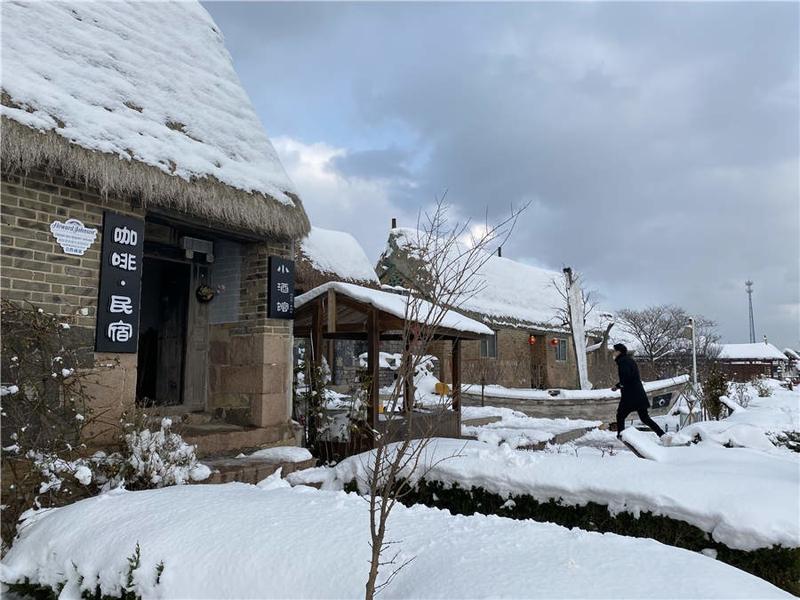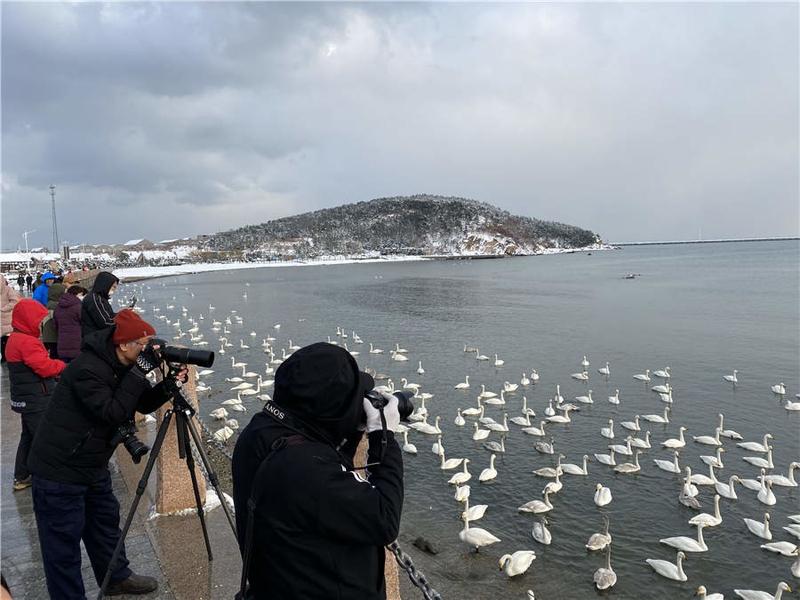 Rongcheng's Yandunjiao village develops homestays for visitors. (ZHAO RUIXUE / CHINA DAILY)
Rongcheng's Yandunjiao village develops homestays for visitors. (ZHAO RUIXUE / CHINA DAILY)
People in most villages in northern China spend winters idly after the year's harvest until the planting season arrives in spring. Not so for the inhabitants of Yandunjiao village in Shandong province's Rongcheng city.
Yandunjiao was listed as a designated village of rural tourism in China this year by the Ministry of Culture and Tourism
"We are much busier in winter than in summer," resident Gao Yongjin says.
Gao runs the village's biggest homestay, which is less than 10 meters from the bay where thousands of whooper swans fly from Siberia and other regions and stay from November to April.
"People come to see the swans in winter," Gao says.
ALSO READ: In China's coldest places, tourism warms up
"They prefer to stay in our village for several days to enjoy seaside life. We also have cafes to accommodate tourists' different tastes."
Gao says over 60 of the village's roughly 220 families run homestays. Tourism development has brought drastic improvements to their lives.
Yandunjiao was listed as a designated village of rural tourism in China this year by the Ministry of Culture and Tourism.
Gao attributes the village's progress to the local government's efforts to advance tourism-based holistic development across the city.
Rongcheng launched a campaign to improve sewage treatment and river-water quality years ago. Rongcheng's offshore waters are now rated Grade 2, the second highest in China's five-tier water-quality evaluation system, which means it's drinkable after treatment.
"You can see our village is so clean," Gao says.
"We don't have professional cleaners. We volunteer to keep our village clean because we know the benefits of a clean environment."
After the swans leave for their summer habitats, Gao and his fellow villagers greet tourists who come to Yandunjiao to paint the sea views and seaweed-thatched houses.
 Bird watchers and photographers from around the country come to Rongcheng in Shandong province to see whooper swans, which stay from November to April. (ZHAO RUIXUE / CHINA DAILY)
Bird watchers and photographers from around the country come to Rongcheng in Shandong province to see whooper swans, which stay from November to April. (ZHAO RUIXUE / CHINA DAILY)
Summertime visitors can also fish at a designated "marine ranch".
"We're busy year-round," Gao says.
This year, the village has welcomed over 80,000 tourists, who generated 10 million yuan (US$1.53 million).
"We're seeking tourism-based development with a comprehensive view of environmental protection, rural revitalization, infrastructure construction and integration of such sectors as the agricultural, marine and service industries," Rongcheng's Party secretary Bao Xi'an says.
Rongcheng was listed among the second batch of 97 demonstration zones for promoting the integrated development of tourism using an area's comprehensive resources to drive social and economic development.
The list was released by the Ministry of Culture and Tourism in Rongcheng on Dec 17. The ministry released the first batch of 71 demonstration areas in 2019.
To coordinate resource use, most of the recognized demonstration areas form a work plan led by top officials.
"Tourism is not only a driver of quality economic development but also an important part of quality living. Tourism-based holistic development should engage residents to build and enjoy quality lives together," Bao says.
Rongcheng has developed a volunteer and a credit system to encourage residents to join in such work as tour guiding, environmental protection and public service.
READ MORE: More Chinese seeking leisure experiences, report says
The city has created credit records for residents, organizations and market entities. Those who achieve sufficient scores can enjoy some public services, such as bus transportation, for free.
"Being listed as a demonstration area is a new start to promote tourism-based holistic development," says Wang Xiaofeng, a senior official with the Ministry of Culture and Tourism.
"There is still a lot to do because tourists' demands are increasing and changing."


